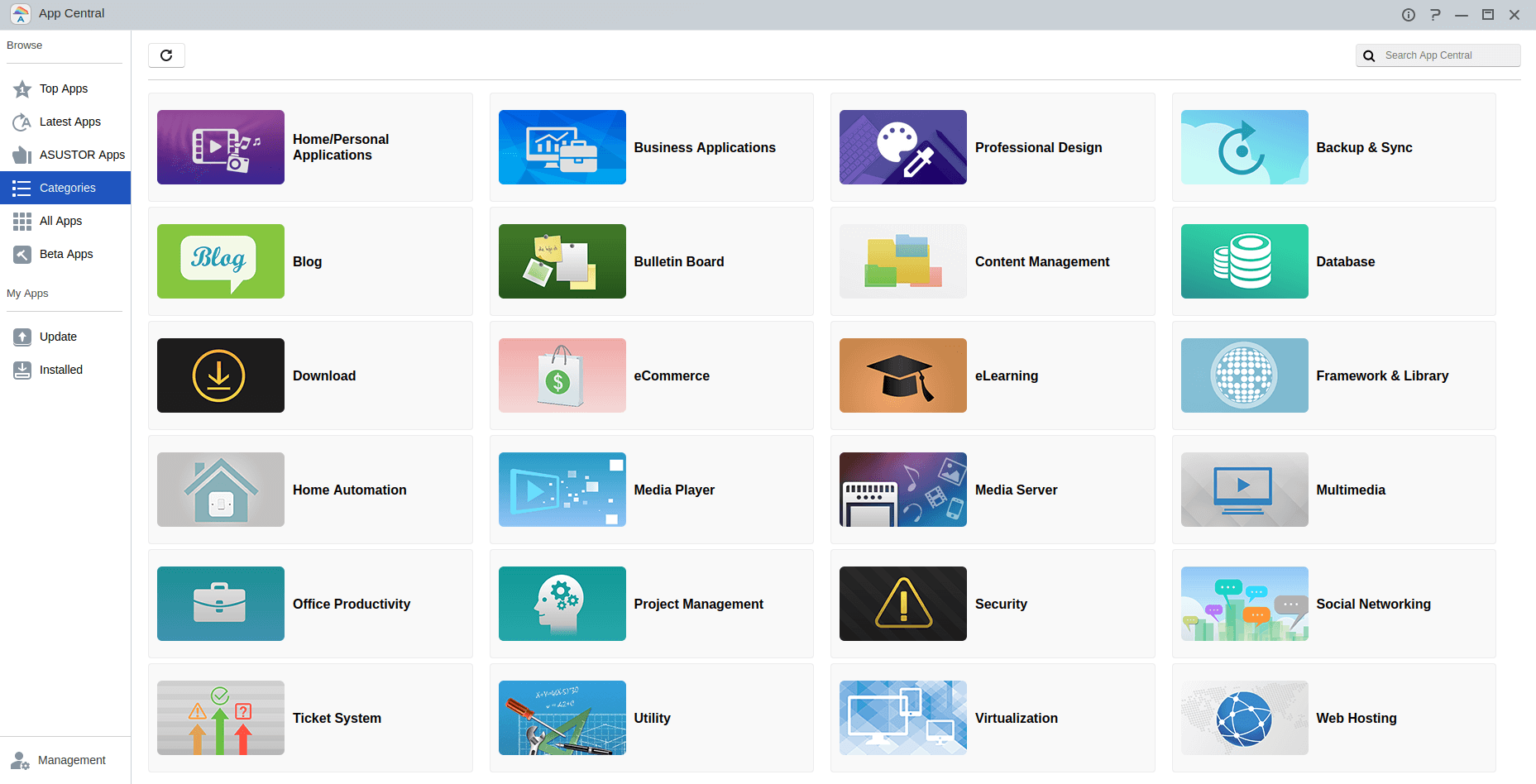App Central
App Central offers a rich array of applications to install on your NAS. Many of the applications are published under an open source license.
By default, no apps from App Central are installed on the NAS. But the interface makes them easy to install. And they are nicely organized into categories as shown below. We can also filter by the top apps, latest apps, and beta apps.

The Top Apps section includes some hugely popular software including the open source Apache web server (nginx is also present) and Docker. The latter is a set of platform as a service (PaaS) products that use OS-level virtualization to deliver software in packages called containers.

Some of the apps require a good dollop of RAM to run well. Particularly, I always prefer to have at least 8GB of RAM to run Docker containers in a production environment. With the 2GB of RAM in the NAS I’m using, I’ll be hampered with what I can test. But given there are so many apps to try, there are bound to be lots to experiment with. I’ll be publishing a separate article on App Central as part of this series.
Next page: Page 6 – Dr. ASUSTOR
Pages in this article:
Page 1 – Introduction
Page 2 – File Explorer
Page 3 – Backup & Restore
Page 4 – Services
Page 5 – App Central
Page 6 – Dr. ASUSTOR
Page 7 – Settings
Page 8 – Activity Monitor
Page 9 – Summary
All articles in this series:
| ASUSTOR Data Master (ADM) | |
|---|---|
| Part 1 | Getting Started with ADM |
| Part 2 | Detailed review of ADM v4.2.5 |
| Part 3 | AiMaster is a NAS management app for mobile devices |
| Part 4 | Extend the functionality of your NAS with software from App Central |

I did find that their OS was just not up to what I needed. I installed unraid, (I have a N95, processor in mine), The only issue with these off the shelf NAS’s is they are underpowered for Plex or Emby. Added bouse with unraid is ZFS.
I’ve seen a lot of YouTube videos about ADM, both good and bad verdicts.
I’ve used a whole raft of NAS devices with their different proprietary operating systems. From my experience, I find ADM to be very good and easy to use. It’s a good solution for home users.
And it’s an easier solution for beginners than a DIY device using Unraid. Of course, it’s easy to build a much higher spec machine for less money even taking into account the cost of the Unraid license, but it’s much more complicated for most people.
Thanks, this is helpful. I’ve never used Linux before, but it seems that ADM should be fine for me.